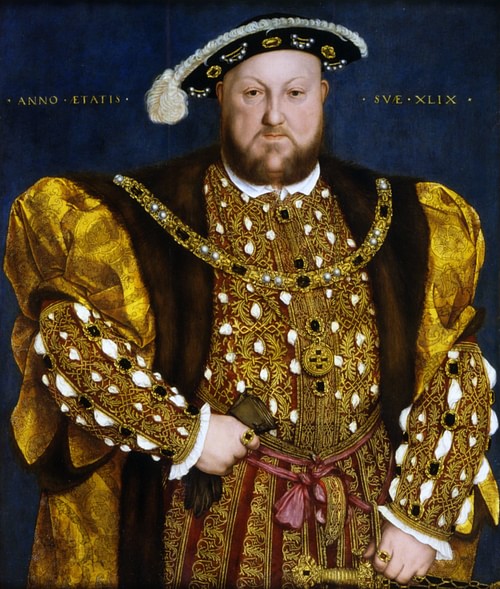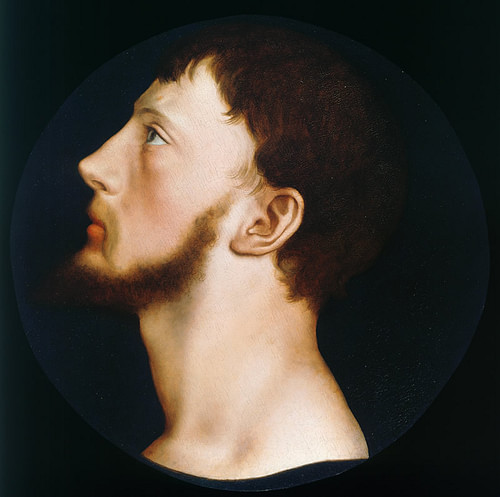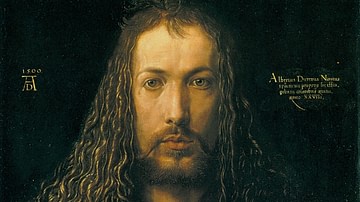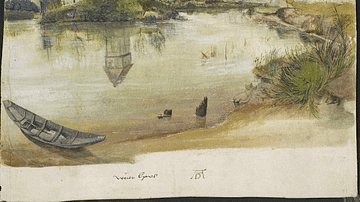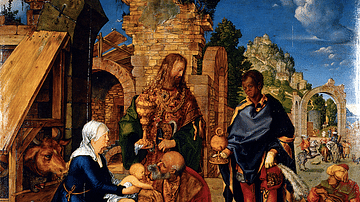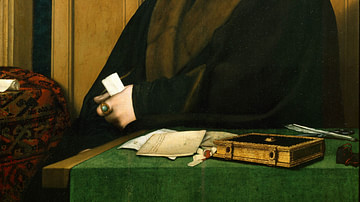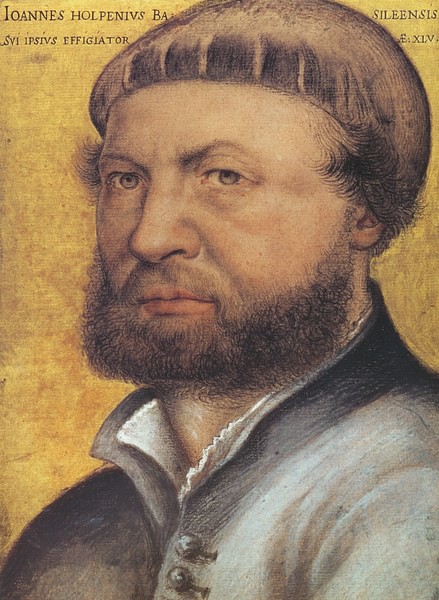
Hans Holbein the Younger (c. 1497-1543 CE) was a German Renaissance painter who is most famous for his portraits. A versatile artist and superb draughtsman, Holbein was accomplished in different mediums from woodcut engravings to murals. Amongst his most recognisable works are portraits of key members of the court of Henry VIII of England (r. 1509-1547 CE) which include the king himself, several of his queens, and statesmen like Sir Thomas More (1478-1535 CE). A distinctive feature of Holbein's paintings is the attention he gives to the flamboyant clothing of the Tudor period.
Early Life
Hans Holbein was born c. 1497 CE in Augsburg, Germany. His father was the celebrated painter Hans Holbein the Elder (c. 1464-1524 CE) who specialised in religious works of art. The elder artist did paint portraits and his surviving sketches reveal that his son inherited his skill at rendering character through detail. Hans the Younger's uncle Sigmund was also a noted painter, and the family genes found further expression in art when his brother Ambrosius also took up painting. After studying in his father's workshop, Hans the Younger went to Basel in Switzerland in 1515 CE, and he there developed into a superb draughtsman, making a name for himself with his designs for woodcuts to make prints. Little else is known about the artists' private life since none of his papers or letters survives, but we do know him by his many artworks, which today adorn museums worldwide.
The Basel Years
Woodcut prints were typically used to illustrate printed books, and Hans' work was used in the title pages of such notable offerings as Sir Thomas More's Utopia (1516 CE) and Martin Luther's (1483-1546 CE) translation into German of the New Testament (1522 CE). Hans joined the painter's guild in Basel and married the widow of a tanner in 1519 CE. He became a Swiss citizen in 1520 CE and continued to gain varied employment such as making designs for stained glass windows and engravings for use by goldsmiths. He also painted murals in private homes and created a set for the Great Chamber of the town hall in his adopted city. Around 1520 CE, he produced The Body of the Dead Christ in the Tomb, which is a very realistic depiction of a decaying corpse (even if the body is unnaturally elongated). This influential painting is now in Basel's Öffentliche Kunstsammlung.
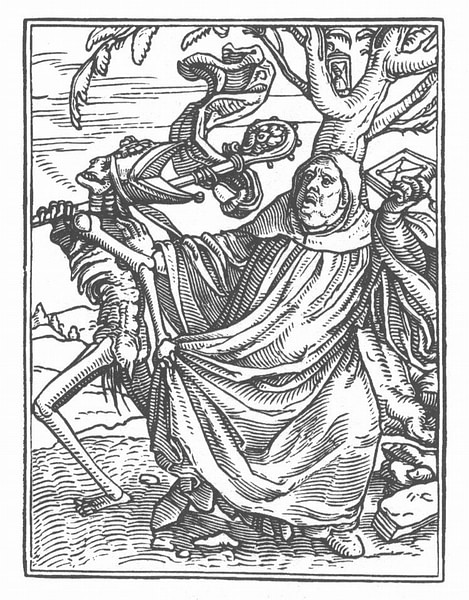
Notable portraits of this period include the Burgomaster and his wife in 1516 CE, and Bonifacius Amerbach, a humanist scholar, in 1519 CE. These early portraits were already showing Holbein's style and the influence of northern Renaissance art in general. The strong gaze of the sitter is carefully rendered while the face is often left curiously impassive. The use of silhouette gives depth to the picture. Further, objects including flora, fauna, and everyday items are included within the painting to subtly suggest the person's work, interests, and character.
In Basel, Hans met one of the great scholars of Renaissance humanism, Desiderius Erasmus of Rotterdam (c. 1469-1536 CE). He painted the scholar three times, and one portrait, created in 1523 CE, has Erasmus suitably surrounded by books. This portrait is now in the National Gallery, London. Hans also provided print illustrations for an edition of Erasmus' Praise of Folly. Another famous Holbein series of 41 prints is the c. 1525 CE Dance of Death. Hans next produced a celebrated altarpiece for a church in Darmstadt, Germany in 1526 CE, the Meyer Madonna.
The artist travelled to other parts of Europe, visiting Milan, Italy in 1517-18 CE and Bourges in France in 1524 CE. In 1526 CE, likely as a consequence of Basel's role as a strong centre of Protestant reformism and the resulting restriction on the arts, Holbein moved to Tudor England for two years. He did return again to Basel and notably painted his wife and two sons there in a poignant portrait of 1528 CE (only copies and the original sketch survive). Holbein again went to England in 1532 CE. Here, based in London, he remained for eleven years, during which he would produce his most famous works.
The Tudor Portraits
Holbein's move to England and search for employment for his artistic talents was smoothed by a letter of recommendation from Erasmus to their mutual friend Sir Thomas More, then Henry VIII's Lord Chancellor (in office 1530-1532 CE). Holbein famously painted several portraits of Henry VIII after he became the English king's official court painter in 1536 CE. The 1540 CE version of the king, now in the National Gallery of Ancient Art in Rome, shows him resplendent in a golden brocade tunic with feather trim and plenty of bling. Indeed, Holbein seems to have had a preoccupation with clothing and jewellery; his preliminary sketches are often covered in notes on these items. As a result of this approach, the often obviously two-dimensional face of his portraits is in marked contrast to the hyper-realistic, almost three-dimensional depictions of costume details such as fur, velvet, feathers, and jewels. Henry VIII was a keen follower of fashion and very much wished to present himself as the ultimate Renaissance prince in all his finery so this may explain why the pair got on so well. Further evidence of this mutual interest is Holbein being asked to design liveries for the court officials (including details like buttons and buckles), covers for royal horses, and the king's robes of state.
Henry famously had six wives and Holbein painted most of them. There is a delicate sketch of wife number two, Anne Boleyn (c. 1501-1536 CE), which is now part of the Royal Collection (although not all scholars agree that it is by Holbein). More secure is the c. 1537 CE painting of wife number three, Jane Seymour (c. 1509-1537 CE), which is now in the Kunsthistorisches Museum in Vienna. The king sent the artist on a very important mission in 1539 CE, to paint his possible future wife number four, Anne of Cleves (1519-1557 CE), so that Henry could decide if she merited such an honour. This painting is today in the Louvre, Paris. Unfortunately, Holbein chose to flatter his subject, and Henry felt he had been misled when he met Anne in person. By then it was too late as backtracking would upset a valuable Protestant ally and so the king married what he called his 'Flanders mare' in January 1540 CE. Fortunately, Henry seems to have largely blamed his chancellor Thomas Cromwell (l. c. 1485-1540 CE) for the whole sorry affair. In any case, the fickle king divorced Anne six months later and swiftly moved on to wife number five, Catherine Howard (c. 1523-1542 CE). Holbein painted Catherine c. 1540 CE in a watercolour which is also part of the Royal Collection.
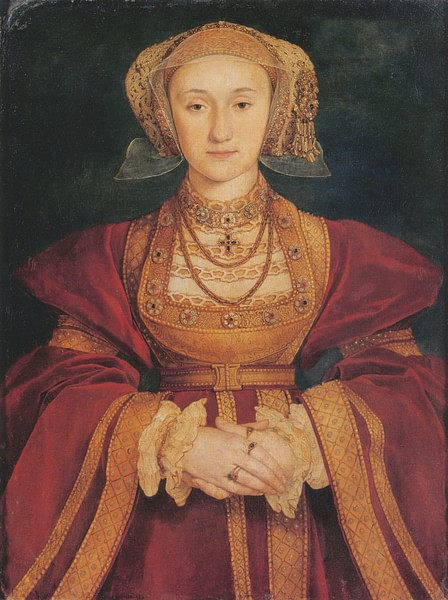
Another important work was an ensemble of the Tudor Dynasty for the Privy Chamber at Whitehall. Included were Henry VIII, his father and founder of the Tudor dynasty, Henry VII of England (r. 1485-1509 CE), Princess Elizabeth, future Elizabeth I of England (r. 1558-1603 CE), and Jane Seymour. Alas, this painting was destroyed in a fire in 1698 CE.
Regarding non-royals, Holbein painted a portrait of Sir Thomas More as Lord Chancellor in 1530 CE. It shows the chancellor in fur robes and wearing his chain of office with the Tudor rose. The artist also painted More's successor, Thomas Cromwell; both paintings are now in the Frick Collection, New York. Another sumptuously dressed official can be seen in Holbein's portrait of Thomas Howard, 3rd Duke of Norfolk (1473-1574 CE), who served as Lord High Steward amongst many other offices of state in a long career. The work is now in Windsor Castle, England. Meanwhile, the portrait of the Duchess of Milan in 1537 CE, today in London's National Gallery, is in stark contrast to Holbein's usual portraits with the full-length figure dressed soberly in an unadorned black dress and coat.
Holbein did not just stick to those in favour at court but also painted those who fell from grace. One notorious subject was Sir Thomas Wyatt the Younger (d. 1554 CE) who infamously led a failed uprising against Mary I of England (r. 1553-1558 CE) in 1554 CE, the Wyatt Rebellion. This painting, which shows Wyatt in a rather odd profile looking towards the heavens, is today on display in the Weiss Gallery in London. The artist did not neglect more humble clients either and painted several German merchants who were based in London.
Artistic Influence
In the centre of the 1533 CE painting known as The Ambassadors, which shows two standing diplomats (the Frenchmen Jean de Dinteville and Georges de Selve), there is what is, in effect, a still life showing a desk with a lute, globe, and books. The work is today in London's National Gallery, and it is interesting to note in it Holbein's experimentation with anamorphosis, that is using distortion so that the subject can only be seen correctly from a specific angle. In The Ambassadors, the distortion is evident in the skull which dominates the foreground.
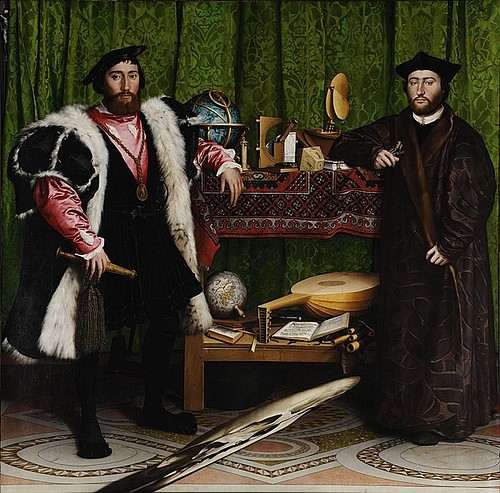
Holbein introduced to England new ideas in painting and ensured the avant-garde techniques of the Netherlandish oil painters became popular with English artists. Another legacy of Holbein's stay in England was his creation of certain miniature portraits, a medium he helped make popular and which other artists took up with great enthusiasm, notably Nicholas Hilliard (c. 1547-1619 CE).
Hans Holbein died in London in 1543 CE during yet another outbreak of the Black Death plague. Perhaps his greatest legacy is the pictorial record of the Tudors he has given us and the invaluable insight into the pride and pomp of one of England's most colourful ruling dynasties. Holbein belonged to the generation after Germany's greatest flowering of artists which had seen such masters as Albrecht Dürer (1471-1528 CE) dominate the European art world. Now the masters were fewer and perhaps a little less brilliant, but Hans Holbein was undoubtedly the best of them and a truly international painter of his time.
